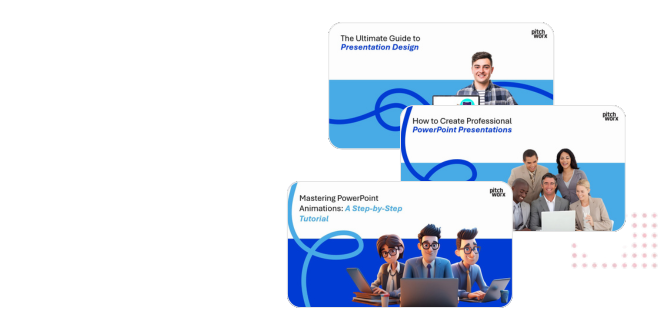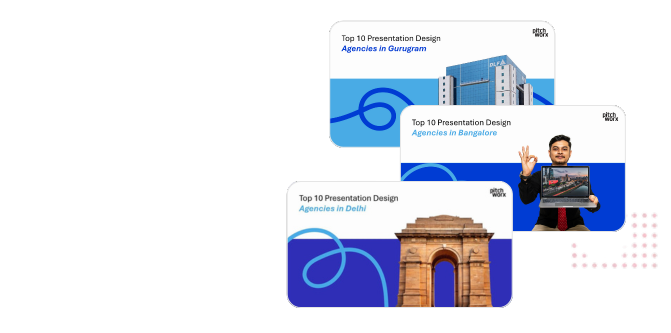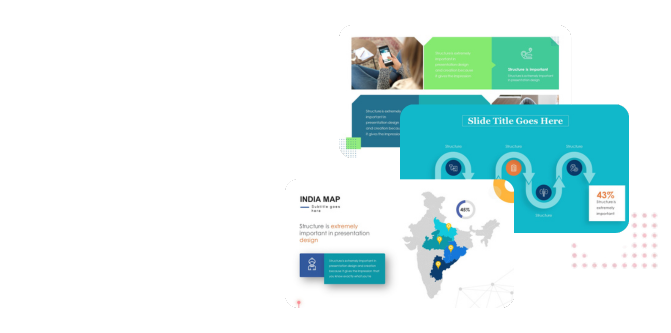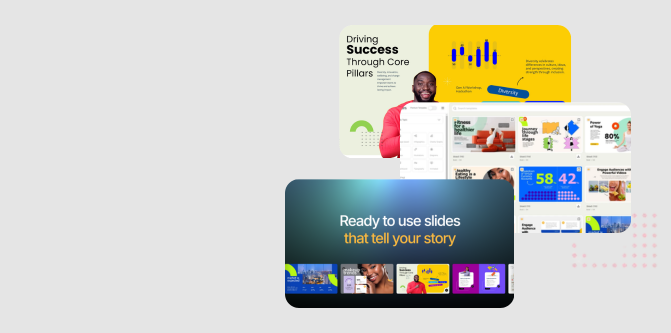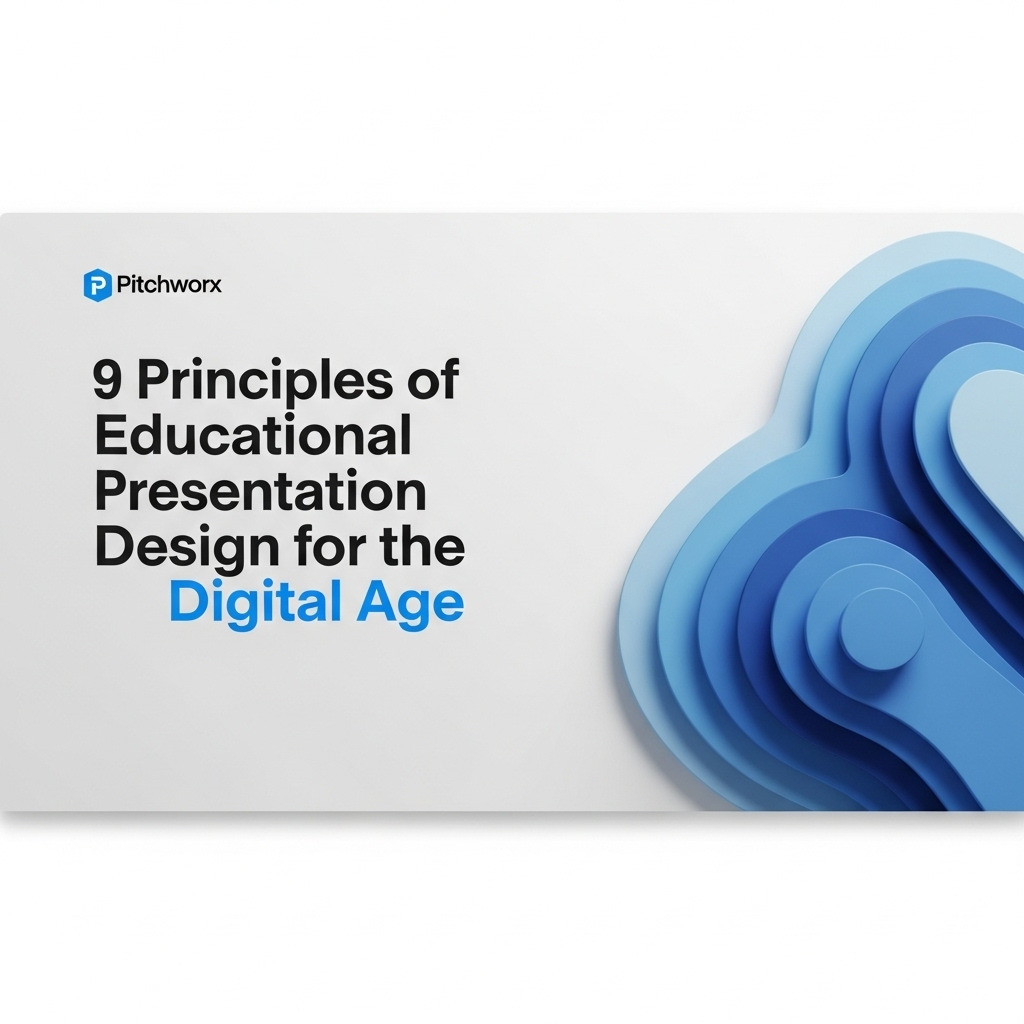The role of the educator is evolving faster than ever. The challenge is no longer just transferring knowledge but capturing and holding the attention of digitally-native students accustomed to instant, interactive content. Standard, text-heavy slides are a recipe for disengagement. Effective educational presentation design is the bridge between complex information and genuine student comprehension. It’s about creating an experience, not just delivering a lecture. When we craft presentations for academic institutions, our focus shifts from corporate KPIs to learning outcomes, but the core principle remains: the audience’s needs dictate the design.
Quick Answer
Educational presentation design transforms passive lectures into active learning experiences. With student attention spans shortening, a Deloitte report found that personalized digital learning can boost engagement significantly. To succeed, educators must: 1. Prioritize instructional design over data-dumping, 2. Integrate interactive elements like polls and quizzes, and 3. Use visual storytelling to simplify complex topics.
Table of Contents
- The Core Problem: Why Traditional Slides Fail in Modern Education
- Unpacking the Root Causes of Student Disengagement
- The Solution: A Framework for Interactive Educational Design
- Principles 1-3: Building a Strong Foundation
- Principles 4-6: Driving Engagement with Multimedia
- Principles 7-9: Structuring for Retention and Impact
- Frequently Asked Questions
- Conclusion: From Information Delivery to Learning Experiences
The Core Problem: Why Traditional Slides Fail in Modern Education
The classic lecture format, simply digitized onto slides, is fundamentally mismatched with how modern students process information. Today’s learners are surrounded by dynamic, on-demand content. A linear presentation filled with dense bullet points feels archaic and, more importantly, ineffective. This isn’t a critique of students; it’s a reality of the cognitive environment they inhabit. Research from organizations like the George Lucas Educational Foundation’s Edutopia platform highlights that attention is a finite resource, and a monotonous flow of information is its primary antagonist. According to their findings in a The Science of Attention analysis, sustained attention requires novelty, emotional connection, and relevance—three things often missing from traditional academic slides.
The result is passive learning, where students become spectators rather than participants. Information is presented *at* them, with little opportunity for interaction or synthesis. This method is particularly poor for complex subjects that require deep understanding, not just rote memorization. Our work on transforming dense academic material into clear narratives for medical and tech training has shown us that engagement isn’t a “nice-to-have”; it’s a prerequisite for retention. When slides are used as a teleprompter for the speaker, they create cognitive redundancy, forcing the brain to process the same information aurally and visually, which ironically leads to less of it being absorbed.
Unpacking the Root Causes of Student Disengagement
To solve the problem, we must understand its origins. Disengagement isn’t random; it’s a direct consequence of specific design and delivery failures that violate core principles of learning science. From our 13+ years of experience, we’ve pinpointed three recurring culprits in ineffective educational presentations.
1. Passive Consumption vs. Active Learning
The most significant issue is designing for passivity. A traditional presentation is a one-way street. The educator speaks, and the student listens. This model ignores a fundamental truth: learning is an active process. True comprehension happens when students are asked to apply, question, or connect new information to existing knowledge. A wall of text does the opposite; it encourages mental checkout. It positions the student as a receptacle for information, not a co-creator of understanding.
2. Overlooking Cognitive Load Theory
Cognitive Load Theory posits that our working memory is limited. When a presentation bombards students with too much information at once—complex diagrams, lengthy text, and a simultaneous spoken explanation—it overloads this working memory. Instead of learning, the brain focuses on simply trying to manage the chaotic influx of data. Many well-intentioned educators fall into this trap, attempting to be thorough by putting every detail on the slide. This backfires, creating a barrier to learning. Effective instructional design, a key component of our presentation design service, is about managing cognitive load, not ignoring it.
3. The Monotony of Linearity
Human brains are wired for novelty and pattern-breaking. A presentation that plods from slide 1 to slide 50 in the exact same format—headline, bullet points, image—becomes predictable and dull. Without variation in pace, format, or interaction, attention naturally wanes. This linear monotony fails to create the memorable “signposts” that help anchor information in long-term memory. It treats all information as having equal weight, providing no narrative arc or emotional resonance to guide the learner.
The Solution: A Framework for Interactive Educational Design
The antidote to disengagement is a strategic shift from information delivery to experience design. This requires a deliberate framework grounded in instructional principles and a deep understanding of visual communication. It’s not about adding more animations or finding prettier templates; it’s about a fundamental change in how the presentation is conceived, structured, and delivered. The goal is to move the student from a passive observer to an active participant in their own learning journey.
At PitchWorx, we approach every project—whether it’s for a startup pitch or a university lecture series—with a story-first, audience-centric methodology. For education, this means translating curriculum goals into a compelling narrative that is easy to follow, visually engaging, and structured for optimal retention. The following nine principles form the core of this framework, providing a practical roadmap for educators looking to transform their presentations.
About PitchWorx
With 13+ years of presentation design experience and 150,000+ slides created, PitchWorx is an ISO 27001 certified agency trusted by Fortune 500 companies and educational institutions across global markets.
Principles 1-3: Building a Strong Foundation
Before a single slide is created, a strategic foundation must be laid. These first three principles are the most critical, as they inform every subsequent design decision.
Principle 1: Start with Clear Learning Objectives
What should students know or be able to do after your presentation? This question must be answered with absolute clarity. Instead of a vague topic like “Cell Biology,” define specific objectives: “By the end of this presentation, you will be able to identify the three main parts of an animal cell and describe the function of each.” These objectives act as a filter for your content. If a piece of information doesn’t directly support an objective, it probably doesn’t belong in the presentation. This ruthless focus prevents content bloat and keeps the presentation centered on its educational purpose. When we build corporate decks, the objective might be to secure funding; in education, it’s to secure understanding.
Principle 2: Embrace the “Less is More” Content Strategy
Your slides are a visual aid, not a comprehensive textbook. The single biggest mistake we see is overloading slides with text. This forces students to choose between reading your slides and listening to you speak—they cannot do both effectively. Each slide should have one core idea, expressed with minimal text. Use a powerful image, a key phrase, or a simple diagram to anchor the concept. The details, explanations, and nuances should come from you, the educator. This approach respects cognitive load limits and re-establishes the speaker as the primary source of information, with the slides playing a supporting role.
Principle 3: Design for Your Audience, Not Yourself
Who are your students? What is their prior knowledge level? What are their interests? An educational presentation for first-year undergraduates should look and feel very different from one for doctoral candidates. Use language, examples, and cultural references that resonate with your specific audience. Consider their digital habits—can you incorporate elements that mimic the platforms they use daily, like short video clips or poll questions? This audience-centric approach makes the material feel relevant and personal, which is a powerful driver of engagement.
Principles 4-6: Driving Engagement with Multimedia
With a solid foundation, you can now focus on making the content dynamic and interactive. Multimedia, when used strategically, can transform abstract concepts into tangible ideas.
Principle 4: Master Visual Storytelling
Humans are visual creatures. We process images far more quickly than text. Instead of listing the steps of a historical event, show a timeline with impactful photos. Instead of describing a scientific process with bullet points, use a simple, animated diagram. Visual storytelling isn’t about decoration; it’s about clarification. Use high-quality images, icons, and charts to simplify complexity and create emotional connection. A powerful photograph can convey more meaning and be more memorable than three paragraphs of text.
Principle 5: Integrate Meaningful Interactive Elements
Interaction shatters passivity. Punctuate your presentation with moments that require student input. This can be as simple as a “raise your hand if…” question or as technologically integrated as a live poll or a short quiz using a tool like Mentimeter or Kahoot!. For more complex subjects, such as engineering or medicine, our immersive 3D designs have allowed students to virtually manipulate and explore models, providing a level of understanding impossible with 2D slides. The key is to make the interaction purposeful—it should reinforce a learning objective, not just serve as a gimmick.
| Aspect | Static Approach (Low Engagement) | Interactive Approach (High Engagement) |
|---|---|---|
| Content Delivery | Bullet points listing facts. | Live poll asking students to guess a statistic before revealing it. |
| Concept Check | “Any questions?” at the end of a section. | A 2-minute “turn and talk” where students explain the concept to a partner. |
| Diagrams | A complex, fully-labeled diagram shown at once. | An animated diagram that builds itself step-by-step as you explain it. |
Principle 6: Use Video and Animation Strategically
Video can be incredibly powerful for demonstrating processes, showing real-world examples, or featuring expert testimony. However, it should be short (ideally under 2-3 minutes) and tightly integrated into the presentation. Don’t just play a long video and expect it to do the teaching for you. Frame it with context before and a debrief question after. Simple animations can also be effective for illustrating connections and flow, but should be used with restraint. Overuse of flashy transitions and animations can be distracting and appear unprofessional. Often, our video production service focuses on creating concise, explanatory animations that serve as the core of a learning module, rather than just supplemental content.
Principles 7-9: Structuring for Retention and Impact
A great presentation isn’t just engaging in the moment; its key messages stick with the audience long after. These final principles focus on structuring content for maximum long-term retention.
Principle 7: Practice Chunking and Sequencing
“Chunking” is the practice of breaking down large blocks of information into smaller, related pieces. Instead of one long 45-minute lecture, structure your presentation into three 15-minute “chunks,” each with its own clear objective and a short interactive element at the end. The sequence of these chunks is also vital. Start with the foundational concepts before moving to more complex applications. Build a logical narrative that guides students from what they already know to what you want them to learn.
Primacy/Recency Effect
Top 2 Retention Points
Students best remember the information presented at the beginning and the very end of a session.
Optimal Chunk Length
10-15 Minutes
Attention significantly dips after this period without a “pattern interrupt” or break.
Principle 8: Maintain a Consistent Visual Identity
While variety in content format is good, your visual design should be consistent. Use a coherent color palette, a limited set of readable fonts (usually 2-3 at most), and a consistent layout for similar types of information. This visual consistency reduces cognitive load because students aren’t forced to re-interpret your design on every slide. It creates a professional, polished feel and reinforces the structure of your content. This is a cornerstone of professional design, evident in the work you’ll find in our portfolio.
Principle 9: Build in Feedback Loops and Assessment
How do you know if your presentation was successful? The only way is to build in mechanisms for feedback and assessment. This doesn’t have to be a formal graded test. It can be a simple exit ticket (e.g., “Write down the most important thing you learned today”), a group discussion, or a quick, non-graded quiz. These feedback loops not only inform you about the effectiveness of your presentation but also act as a powerful tool for reinforcing learning. When students are asked to retrieve and articulate information, it strengthens their memory of it.
Related Services
Frequently Asked Questions
What is the ideal length for an educational presentation?
There’s no single ideal length, but it’s crucial to break content into 10-15 minute chunks to align with natural attention spans. A 50-minute lecture is more effective as three 15-minute segments with short interactive breaks in between than one continuous block. The total length should be determined by the learning objectives, not a predetermined number of slides.
How can I make a data-heavy presentation engaging for students?
Data should be presented as a story, not a spreadsheet. Use strong data visualization—charts and graphs—to reveal insights. Instead of just presenting a number, explain what it means. For example, turn a statistic into an analogy a student can relate to. Use interactive polls to have students predict data points before you reveal them, turning passive reception into an active guessing game.
What are some good free tools for creating interactive presentations?
Several excellent free or freemium tools can enhance interactivity. Mentimeter and Slido are fantastic for live polls, word clouds, and Q&A sessions that integrate with PowerPoint or Google Slides. Kahoot! and Quizizz are great for gamified quizzes to check for understanding. For non-linear presentations, Prezi can be effective, though it should be used with care to avoid creating motion sickness.
How does educational presentation design differ from corporate design?
The core principles of clarity and audience focus are the same, but the goals differ. Corporate presentations are typically persuasive, aiming to drive a specific business action (e.g., investment, sale). Educational presentations are explanatory, aiming to build long-term understanding and skills. This means educational design often requires more scaffolding, repetition, and built-in checks for comprehension.
What’s the single most common mistake in educational slides?
Cognitive overload. This usually manifests as slides crammed with dense text and complex, unlabeled diagrams. The presenter often reads directly from these slides. This approach not only bores the audience but is fundamentally counterproductive to learning, as it overwhelms the brain’s capacity to process and retain information. The solution is always to simplify: one idea per slide.
Can accessibility principles be integrated into educational presentation design?
Absolutely, and they should be. This includes using high-contrast colors, large, readable fonts (like Sans-Serif), and adding descriptive alt-text to all images for students using screen readers. Avoid relying on color alone to convey information. Providing a transcript or a downloadable version of the presentation also enhances accessibility for all learners.
Conclusion: From Information Delivery to Learning Experiences
Effective educational presentation design is a powerful tool for fostering a more dynamic and effective learning environment. By moving beyond static, text-filled slides and embracing principles of instructional design, visual storytelling, and interactivity, educators can capture student attention and significantly improve knowledge retention. It requires a shift in mindset: see your presentation not as a document to be read, but as a scaffold for a shared learning experience.
Implementing these nine principles—from setting clear objectives and managing cognitive load to integrating multimedia and feedback loops—will make your content more engaging, memorable, and impactful. The next step is to review your existing materials through this new lens and identify one or two principles you can apply immediately to transform your next presentation.
Ready to elevate your educational content? Our presentation design services help educational institutions across global markets create compelling learning experiences. View our portfolio to see how we transform complex ideas into clear, engaging visuals.




